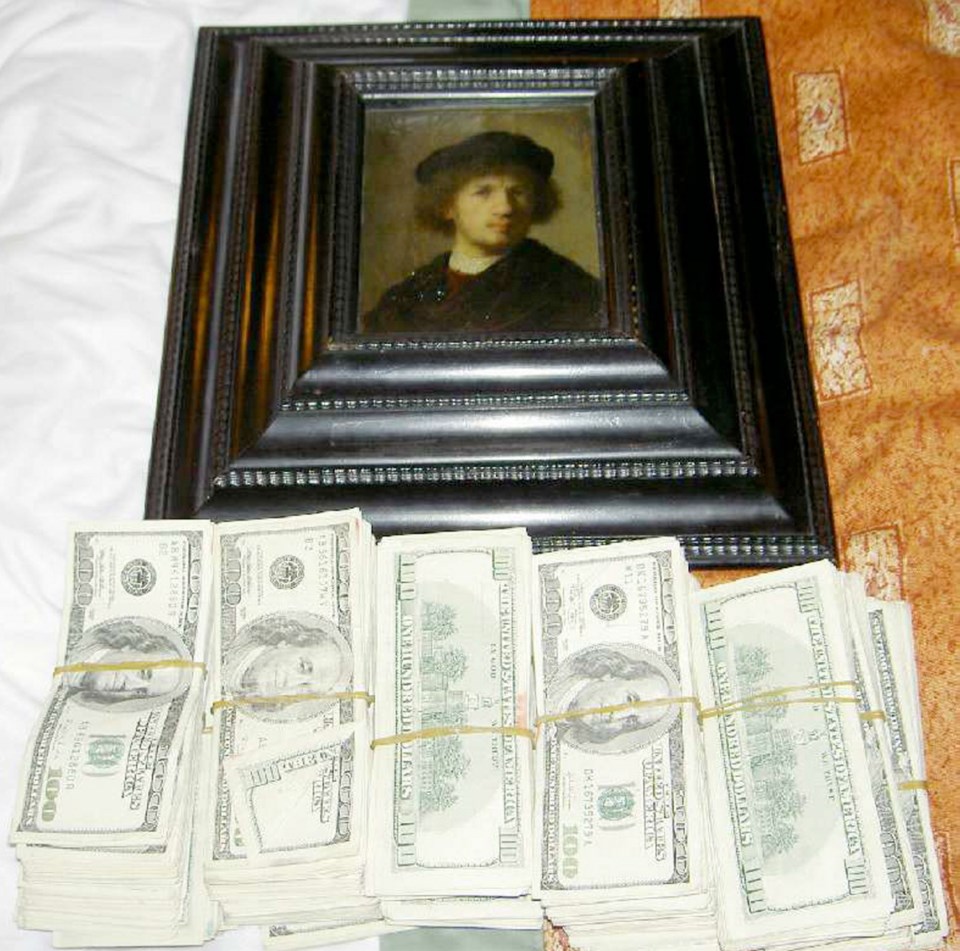What: Orion Lecture: art detective Robert K. Wittman
Where: Bob Wright Centre, Room B150, University of Victoria
When: Oct. 4, 7 p.m. to 9 p.m.
Admission: Free
As a former FBI investigator who helped recover more than $300 million US worth of stolen art and cultural property over two decades, Robert K. Wittman has his share of incredible tales.
Wittman, slated to give an Orion Lecture at the University of Victoria, joined the FBI in 1988 and became a senior investigator with its national Art Crime Team. He says one of the best stories is the time thieves armed with machine guns and grenades stole $42 million worth of paintings from the Swedish National Museum in 2000.
“We did an undercover operation in Copenhagen in Denmark, where we recovered the most valuable piece. It was a [1630] Rembrandt self-portrait stolen in the armed robbery. It was valued at $35 million,” Wittman said from his home near Annapolis, Maryland.
The booty had also included a pair of Renoir paintings. To foil the police, the thieves set off car bombs on streets near the museum. Afterward, they zoomed off in a speedboat. “I thought it was a very well-thought-out crime,” Wittman said.
Swedish authorities called in Wittman and the FBI art-crimes unit. In 2005, Wittman was able to meet the bad guys in a Copenhagen hotel room. He had a bag containing $250,000 US, which he traded for the Rembrandt. Once it got it in his arms, Wittman signalled a Danish SWAT team.
The London Times once declared the 60-year-old “the most famous art detective in the world.” The list of items Wittman helped recover over his career is mind-boggling.
There’s armour worn by a South American king, a gold Peruvian mask and works by Rodin, Picasso, Goya and Norman Rockwell. Wittman once led an FBI sting that sleuthed out an original copy of the U.S. Bill of Rights.
And he recovered the diary of Nazi war criminal Alfred Rosenberg, which had fallen into the hands of a former Toronto college professor after being missing for decades. This year, Wittman published a book about this, The Devil’s Diary, written with David Kinney.
Today, Wittman runs his own art-recovery and security company. He once told an interviewer the thrill of finding stolen masterpieces is similar to how he felt when his children were born. “But the euphoria doesn’t last as long,” he said with a laugh. “When you get one of these [artworks] back, it’s a eureka moment for about an hour.”
For the free Orion Lecture, Wittman will be joined by Alison Ross, the owner of Kilshaw’s Auctioneers.
Wittman said he’ll speak about art theft — who commits it, how it’s done. He’ll also give tips to collectors on how to protect their collections and how to avoid fakes. He’ll illustrate his talk with videos, including a clip showing the undercover Copenhagen art rescue.
Movies and television routinely give art thieves a glamorous glow. They are champagne-sipping rascals — connoisseurs who lapse into a criminal life to satisfy their lust for masterpieces.
But Wittman says the reality is quite different.
“It’s all about the money. They’re not art lovers. What they are is thieves,” he said.
“It’s always dangerous. You’re dealing with people who are criminals. They’re doing criminal enterprises: armed robberies, bank robberies. They’re stealing cars, they’re selling drugs and weapons. And they happen to do art theft, too.”
Art thieves typically run into one basic problem. As difficult as it might be to steal a Picasso, it’s even trickier to sell it. And it’s when stolen art comes on the black market that detectives such as Wittman typically get the opportunity to nab the thieves.
“What I always say is, the criminals, they’re better criminals than they are businessmen.”
The 500-page diary of Alfred Rosenberg was missing for more than half a century. Dubbed “Hitler’s philosopher,” Rosenberg’s views on race are believed to have kindled the Fuehrer’s persecution of Jews.
The diary was found in the possession of Herbert Richardson, who had once taught at the University of St. Michael’s College in Toronto. It’s now in the U.S. Holocaust Memorial Museum. Wittman says its main value is historical, as it contains accounts of private meetings with Hitler from 1936 to 1945.
Wittman estimates its monetary value at $500,000 US. It’s difficult to imagine who’d want to purchase such an item on the black market.
“There are these domestic terrorist groups, Hitler-ites and that type of thing who are interested in that type of material,” Wittman said. “There were things in the diary we didn’t know, so it was an important thing to get back. Not simply from a financial point of view, but also from the idea of cultural property and history.”
One of Wittman’s favourite experiences was recovering a copy of the U.S. Bill of Rights owned by the state of North Carolina. It was one of 13 copies originally sent to the 13 American colonies in 1789. It was stolen by a Union soldier during the Civil War and the state never got it back.
Wittman posed as a philanthropist who offered to purchase it from a dishonest antique collector. An FBI swat team interrupted the transaction. The Bill of Rights was finally returned to North Carolina in 2007. “As an FBI agent, it was my job to uphold the Constitution. I never thought I’d uphold the real piece of paper, you know,” Wittman said with a laugh.


-thumb.png;w=120;h=80;mode=crop)
